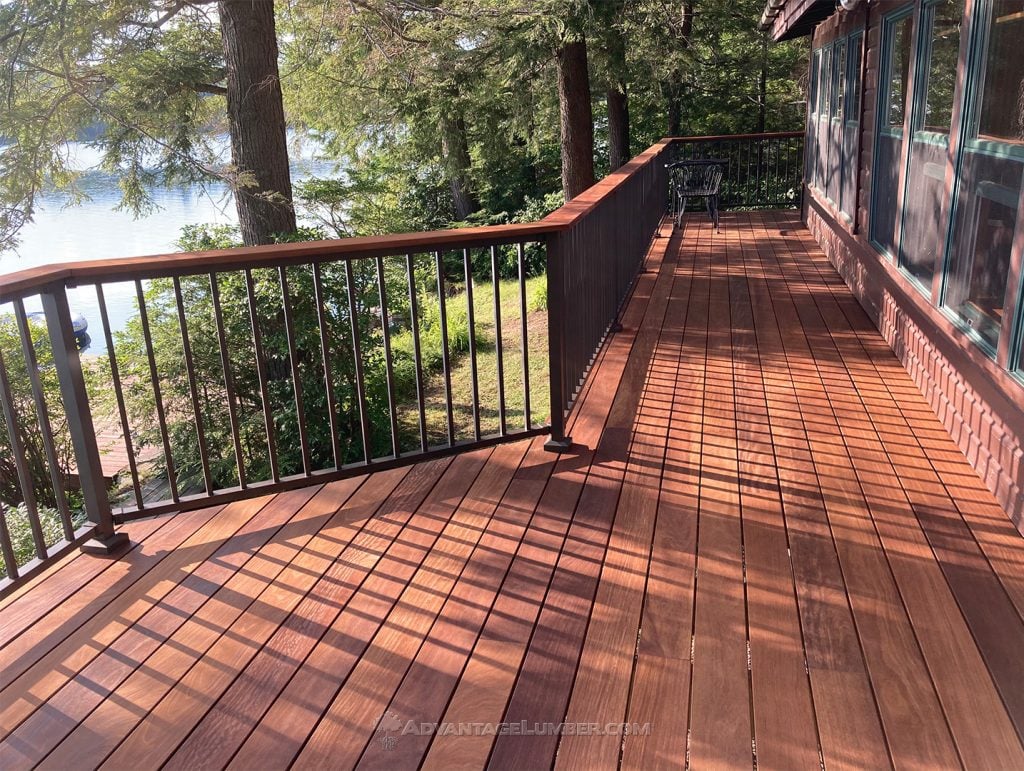If you’ve ever shopped for decking materials, you’ve probably come across the term “5/4 decking.” This designation often raises questions about what it actually means in terms of thickness. Whether you’re considering wood, composite, or PVC decking, understanding the terminology is crucial to making informed choices for your project.
What Does 5/4 Mean in Lumber?
The term “5/4” refers to a lumber thickness of five quarters of an inch, or 1 ¼ inches. This measurement is based on the quarter-inch lumber grading system, commonly used for finished wood products. Here’s how it works:
- Lumber is initially cut to a “nominal” size, which is slightly larger than its finished dimensions. For example, rough-sawn lumber labeled as 5/4 starts at 1.25 inches thick.
- After the wood is planed and smoothed, the final thickness typically measures closer to 1 inch for most 5/4 boards. This finished size is consistent across most decking products labeled as 5/4.
The 5/4 sizing convention is widely used in the wood decking industry, where strength and durability are critical but weight must also be manageable.
Types of Wood Decking Labeled as 5/4
Wood species commonly used in 5/4 decking include:
1. Pressure-Treated Pine

- One of the most affordable and widely available options, pressure-treated pine resists rot and insects when properly maintained. It’s planed to about 1 inch thick but retains enough durability for decking.
2. Western Red Cedar

- Cedar decking is lightweight and naturally resistant to decay, making it a popular choice for outdoor projects. Its 5/4 thickness ensures stability while offering a smooth, attractive finish.
3. Ipe

- Known for its legendary strength and longevity, Ipe hardwood decking typically comes in 5/4 boards for enhanced structural integrity. The extra thickness supports high traffic and heavy loads. Ipe is also available in 1×6 which has a finished thickness of 3/4″ because the wood is so strong you can often use a thinner deck board and save yourself money.
4. Cumaru

- Similar to Ipe in durability, Cumaru offers exceptional resistance to rot and weathering. Its 5/4 dimension provides the perfect balance of toughness and aesthetics. Cumaru is also available in 1×6 which has a finished thickness of 3/4″ because the wood is so strong you can often use a thinner deck board and save yourself money.
5. Tigerwood

- This exotic hardwood stands out for its vibrant grain patterns and natural resistance to decay. The 5/4 thickness adds to its allure and functionality for decking applications. Tigerwood is also available in 1×6 which has a finished thickness of 3/4″ because the wood is so strong you can often use a thinner deck board and save yourself money.
Why Composite and PVC Decking Don’t Use 5/4 Measurements
Unlike wood decking, composite and PVC decking products don’t follow the 5/4 sizing convention. Instead, they are typically manufactured as 1 x 6 boards, which measure:
- approximately 1 inch thick
- 5 ½ inches wide
This standardized sizing makes composite and PVC decking easier for consumers to understand. Composite and PVC decking are engineered for longevity and low maintenance. Some composite and PVC deck boards are not as rigid as wood decking so it’s often recommended to frame your deck 12″ on center.
Why Thickness Matters in Decking
The thickness of your decking boards directly affects their strength and performance. Here are a few factors to consider:
- Structural Strength: Thicker boards like 5/4 wood decking provide better support for higher loads and reduce cupping of the deck boards.
- Durability: The extra material in 5/4 boards helps resist wear, especially in high-traffic areas.
- Cost: Thicker boards can be more expensive, but they may reduce the need for frequent repairs or replacements over time.
Making the Right Choice
When choosing between wood, composite, or PVC decking, consider the specific needs of your project:
- Wood Decking: Choose 5/4 wood deck boards for a natural look, traditional strength, and time-tested reliability.
- Composite or PVC Decking: Opt for these if you prefer low-maintenance materials with modern design options.
Understanding terms like “5/4 decking” is essential for any homeowner or contractor. Whether you’re drawn to the rich beauty of Ipe or the convenience of composite materials, knowing how thickness affects performance will help you select the best decking for your outdoor space.
